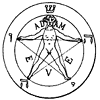Post by Enoch on Mar 8, 2010 15:53:51 GMT 3
House of Farnese
The Farnese family was an influential family in Renaissance Italy.
Its most important members include Pope Paul III and the Dukes of Parma.
Several important architectural works and antiquities are associated with the Farnese family, either through construction or acquisition, including the Farnese Marbles. These include the Palazzo Farnese in Rome and the Villa Farnese in Caprarola.
Origins
The family could trace its origins back to around AD 984 and took their name from one of their oldest feudal possessions - Castrum Farneti. There has been some debate as to the origins of the name Farnesti/Farnese. Some suggest that it derives from the vernacular name for an oak found in the region, the Farnia (Quercus robur), but others have held that the name owes its origins to the Fara, a term of Lombard origin used to denote a particular social group. In the 12th century they are recorded as minor feudataries in the area of Tuscania and Orvieto, several members holding political positions in the latter commune. One Pietro defeated the Tuscan Ghibellines in 1110 and, most likely, fought against the Italo-Normans in 1134. His son Prudenzio was consul in Orvieto and defeated the Orvieto Ghibellines backed by Siena; another Pietro defended the town against Emperor Henry VI.
In 1254 one Ranuccio defeated Todi's troops and fought for Pope Urban IV against Manfred of Sicily. His son Niccolò was in the Guelph army in the Battle of Benevento (1266).
The Farnese returned in Tuscia (southern Tuscany-northern Lazio) in 1319, when they acquired Farnese, Ischia di Castro, and the Castles of Sala and San Savino. In 1354 Cardinal Albornoz, in return for the family's help in the war against the Papal riotous barons, gave them the territory of Valentano. In this period they fought against the fierce Papal rivals, the Prefetti di Vico. In 1362 Pietro Farnese was commander-in-chief of the Florentine army against Pisa in the war for Volterra. Six years later Niccolò Farnese saved Pope Urban V from the attack of Giovanni di Vico, first in the castle of Viterbo and then in that of Montefiascone. The loyalty to the Papal cause granted to the Farnese the confirmations of their possessions in the northern Lazio and a series of privileges which raised them as the same level of the more ancient and powerful Roman barons of the time (Savelli, Orsini, Monaldeschi, Sforza of Santa Fiora).
Rise of the family
The family substantially increased its power in the course of the 15th century, as their territories reached the southern shore of the Lake Bolsena and Montalto, especially thanks to Ranuccio the Elder. He was commander-in-chief for the neighbouring Siena against the Orsini of Pitigliano and, after his victory, received the title of Senator of Rome. His son Gabriele Francesco originated the "military" line of the family, which however disappeared after three generations.
Pope Paul III with his cardinal-nephew Alessandro Cardinal Farnese (left) and his other grandson, Ottavio Farnese, Duke of Parma.
The Farnese's Palazzo della Pilotta in Parma. Ranuccio's son Pier Luigi married a member of the ancient baronial family of the Caetani (that of Pope Boniface VIII), thus giving the Farnese further importance in Rome. His daughter Giulia, who was a mistress of Pope Alexander VI, further expanded the Roman fortunes of her family. She granted her brother Alessandro the title of cardinal; under Alexander's successor Julius II he became governor of the Marca Anconetana and, in 1534, he managed to become pope as Paul III. Among his most notable feats, there were an unprecedented nepotism and the establishment of the Council of Trent.
Dukes of Castro and Parma
Paul III named his son Pier Luigi gonfaloniere of the Roman Church and Duke of Castro, granting him the possession of a state encompassing the Farnese lands from the Thyrrenian Sea to the Lake of Bolsena, as well as the county of Ronciglione and many other smaller fiefs.
In 1545 Paul was also able to carve out, from territories once belonging to the Papal States, another state in northern Italy for his son, the Duke of Parma and Piacenza. Two years later Pier Luigi was assassinated by his new subjects under Spanish mandate. Despite Charles V moves, the pope reacted and soon established Ottavio, Pier Luigi's son, on the ducal throne. Paul III died in 1549, his political role in the curia handed over to his grandson Alessandro, who was an influential cardinal until his death in 1589.
The Duchy of Parma continued to be ruled by the Farnese until the 17th century, but that of Castro went lost in 1649 under the military assault launched by Pope Innocent X. Despite the lack of the territories in central Italy, the Farnese court in Parma under duke Ranuccio II was one of the most splendid in Italy.
As the small state fell under the Spanish control and influence, the family lost Parma and Piacenza in 1731 as the last duke Antonio Farnese died heirless.
Most notable members
Pietro Farnese (dates unknown)
Ranuccio Farnese (1390—1450)
Pier Luigi Farnese (1435—1487)
Pope Paul III, born Alessandro Farnese (1468—1549)
Giulia Farnese, mistress of Pope Alexander VI and sister of the above Alessandro Farnese
Pier Luigi Farnese, first Duke of Parma (1503—1547)
Alessandro Farnese, Cardinal (1520—1589)
Ottavio Farnese, second Duke of Parma (1524—1586)
Ranuccio Farnese, Cardinal (1530—1565)
Alessandro Farnese, third Duke of Parma (1545—1592)
Ranuccio I Farnese, fourth Duke of Parma (1569—1622)
Odoardo Farnese, fifth Duke of Parma (1612—1646)
Ranuccio II Farnese, sixth Duke of Parma (1630—1694)
Francesco Farnese, seventh Duke of Parma (1678—1727)
Antonio Farnese, eighth Duke of Parma (1679—1731)
Elizabeth Farnese, Queen of Spain, wife of King Philip V, mother of Charles III (1692—1766)
Sources
Annibali, Flaminio Maria (1817-1818). Notizie Storiche della Casa Farnese. Montefiascone.
del Vecchio, Edoardo (1972). I Farnese. Rome: Istituto di studi romani editore.
Drei, Giovanni (1954). I Farnese grandezza e decadenza di una dinastia italiana. Rome: La Libreria dello Stato.
Nasalli Rocca, Emilio (1969). I Farnese.
The Professional Women's Association (PWA) of Rome invites you to our next networking meeting on:
Wednesday January 21st, 2009 at the Rose Garden Hotel (Via Boncompagni, 19) at 7:00 PM on
A LECTURE ON: GIULIA FARNESE - A women of incredible power and influence in Renaissance in Italy
By Prof.ssa Felicita Menghini
Prof.ssa Felicita Menghini Di Biagio is a scholar of the Farnese Family and has focused primarely on the historical-artistic testimonies left from the Farnese in the Patrimony of Saint Peter in Tuscia, with particular attention to the figures of Julia Farnese and the brother Pope Paul III.
Prof.ssa Felicita Menghini Di Biagio is the author of “Isola Bisentina. Giardino tempio dei Farnese” and “Paolo III, pillole e profezie. Astrologia e medicina alla
corte papale del ‘500”. Prof.ssa Felicita Menghini Di Biagio has participated as
speaker in numerous conferences on topics related to envirnonment and history.
THE LECTURE WILL BE HELD IN ITALIAN.
Because of room limitation confirmation is absolutely required.
Please confirm via email at info@pwarome.org
Members and paid guests will have a priority at the entrance.
Find out more about our guest speaker by going to our site
www.pwarome.org/events.htm
Kind regards
PWA Board
www.pwarome.org
Visitor fees:
Euro 10,00 (on-line registration and payment)
Euro 15,00 (late registration at the event; only cash, no credit cards or cheques accepted)
PWA Membership fee: Euro 80.00 per year
Meeting agenda
18:00 - Welcome / Registration desk opens
19.00 - Presentation by Guest Speaker
19:45 - Open Forum
20:15 - Non-alcoholic drinks are served: networking time

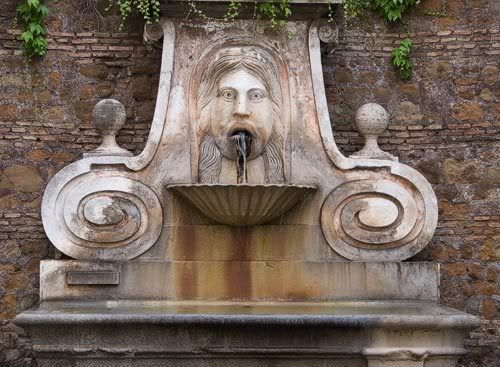
(The Farnese Fountain)

(Palazzo Farnese)
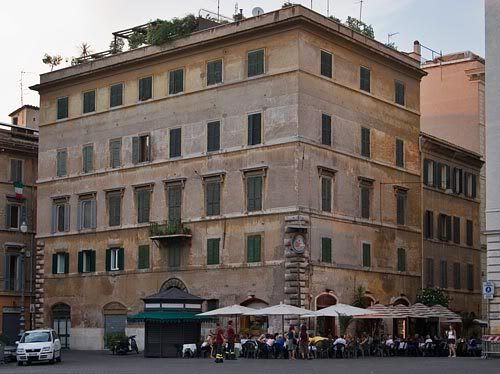
(Farnese Cafe)

(Farnese Hotel)
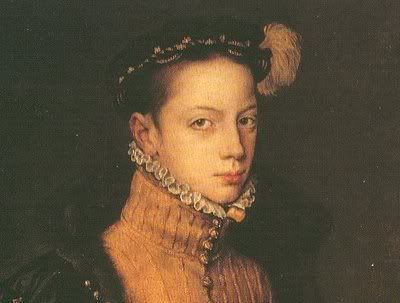
(Alessandro Farnese)
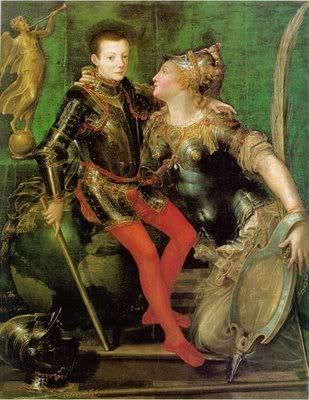
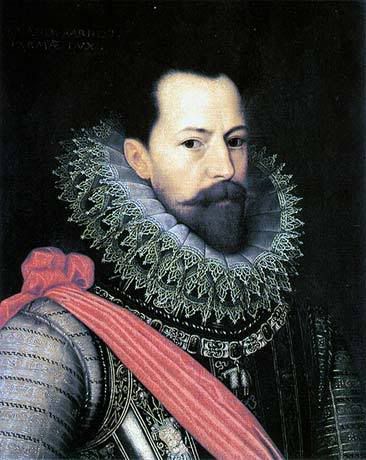
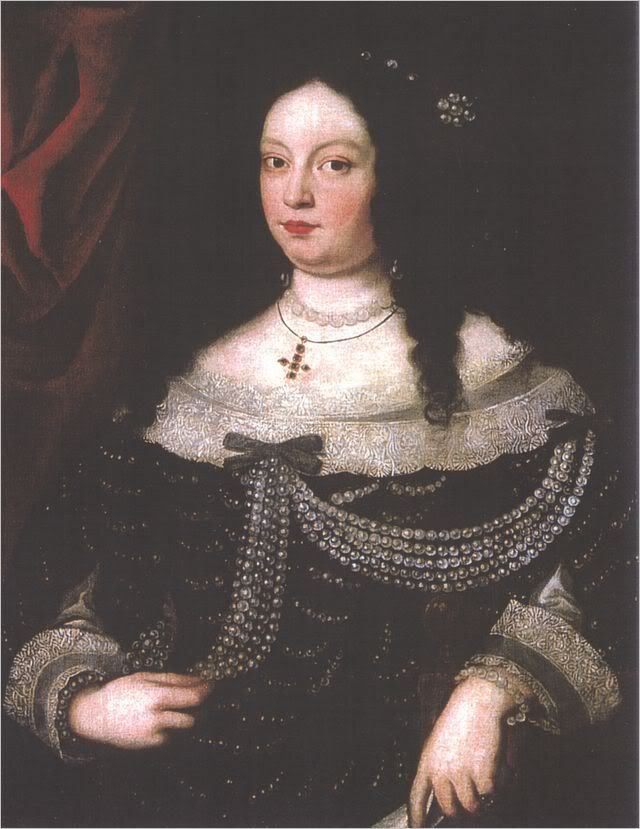
(Vittoria Farnese)
Seconda moglie di Francesco I d'Este, duca di Modena e Reggio col dominio della Garfagnana.
Duchessa dal 1648 al 1649.
Ritratto di Vittoria Farnese, anonimo del sec. XVII. Modena, Banca Popolare dell'Emilia Romagna
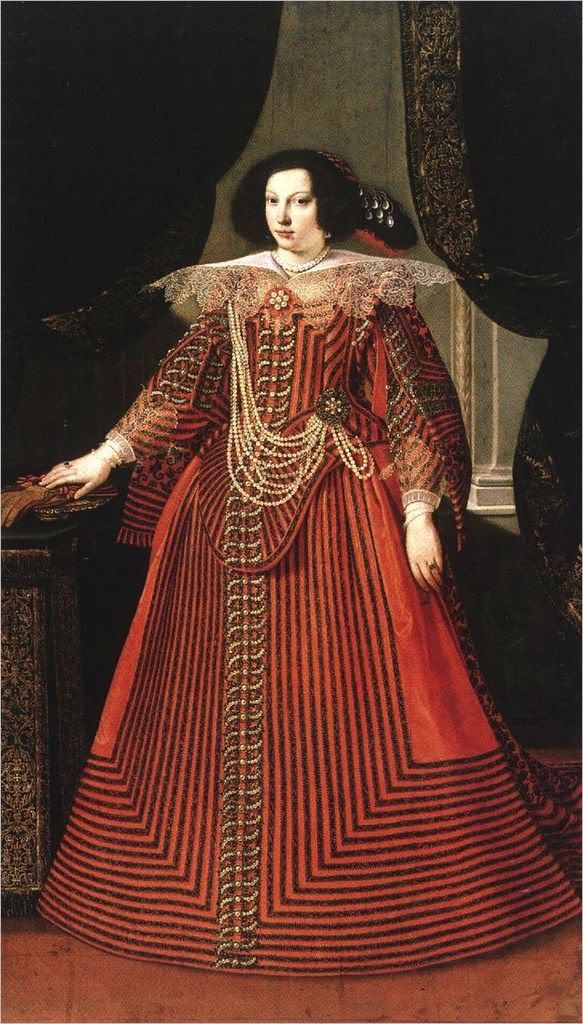
(Maria Farnese)
Prima moglie di Francesco I d'Este, duca di Modena e Reggio col dominio della Garfagnana.
Duchessa dal 1631 al 1646.
Matteo Loves. Ritratto di Maria Farnese, Ginevra, Museo delle Arti e della Storia
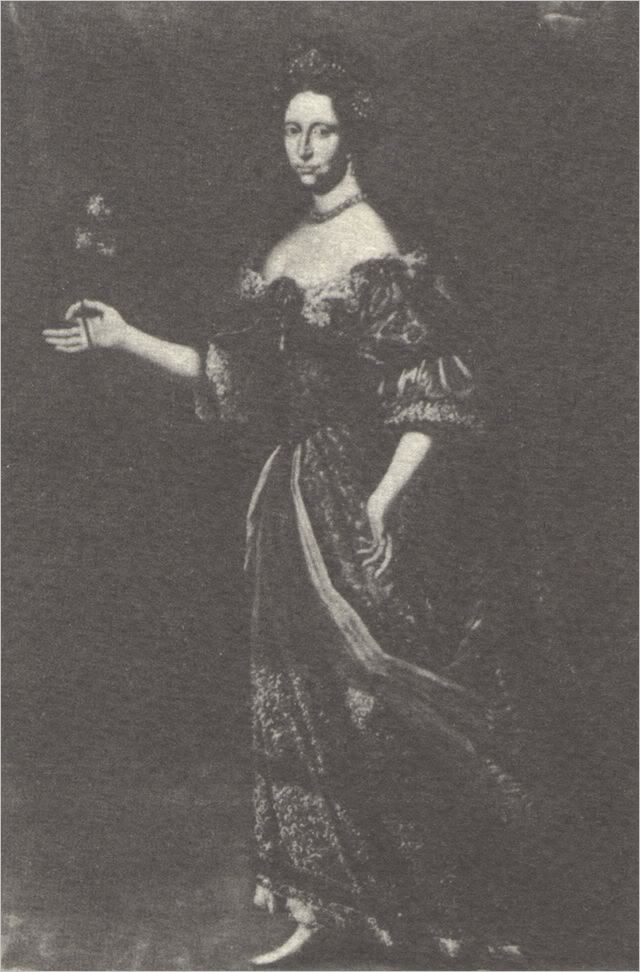
(Margherita Farnese)
Moglie di Francesco II d'Este, duca di Modena e Reggio col dominio della Garfagnana.
Duchessa dal 1692 al 1694.
Ritratto di Margherita Farnese, autore ignoto. Parma, Galleria Nazionale.
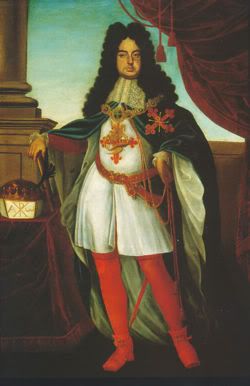
(Francesco Farnese)
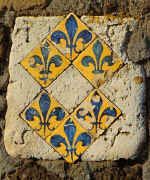
I sei gigli azzurri in campo oro dei Farnese (Torre campanaria della Chiesa Collegiata di Gradoli)
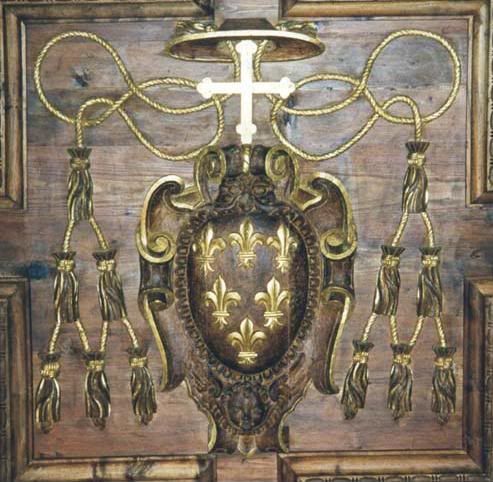
Arms of cardinal Farnese on a ceiling decoration, palazzo Farnese, Caprarola
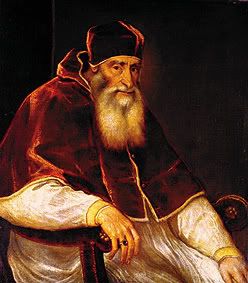
(Pope Paul III, Farnese)


Elisabetta Farnese born October 25, 1692, Parma, Duchy of Parma
died July 11, 1766, Aranjuez, Spain
Queen Isabel de Farnesio consort of Philip V of Spain (reigned 1700–46), whose ambitions to secure Italian possessions for her children embroiled Spain in wars and intrigues for three decades. Her capability in choosing able and devoted ministers, however, brought about beneficial internal reforms and succeeded in improving Spain’s economy.
Isabella was the daughter of Odoardo Farnese (died 1693), the eldest son of Ranuccio II of Parma and Píacenza. She was the second wife of Philip and arrived in Spain in December 1714, whereupon she dismissed the resident royal favourite and quickly established an ascendancy over her weak husband that she continued to exercise until his death in 1746.
Since Philip’s two sons by his first wife were in line to succeed him, the ambitious Isabella sought to secure lands in Italy for the children (four sons and three daughters) she bore the sovereign. This quest dominated her reign, and in the end Spanish imperialism in Italy achieved marked success. Isabella’s eldest son, Charles (afterward Charles III of Spain), and his brother Philip both gained titles to Italian domains.
Isabella favoured ministers who could acquire the resources needed to advance her schemes, and the men she chose not only carried out her foreign policy but also undertook useful economic, administrative, and military improvements. After Philip’s death and the accession of her stepson Ferdinand VI (reigned 1746–59), Isabella ceased to exert any real influence and spent many of her later years away from court, although she did act as regent between the death of Ferdinand VI (August 10, 1759) and the arrival in Spain of his successor, Charles III, in December 1759.
Source britannica

The Farnese family was an influential family in Renaissance Italy.
Its most important members include Pope Paul III and the Dukes of Parma.
Several important architectural works and antiquities are associated with the Farnese family, either through construction or acquisition, including the Farnese Marbles. These include the Palazzo Farnese in Rome and the Villa Farnese in Caprarola.
Origins
The family could trace its origins back to around AD 984 and took their name from one of their oldest feudal possessions - Castrum Farneti. There has been some debate as to the origins of the name Farnesti/Farnese. Some suggest that it derives from the vernacular name for an oak found in the region, the Farnia (Quercus robur), but others have held that the name owes its origins to the Fara, a term of Lombard origin used to denote a particular social group. In the 12th century they are recorded as minor feudataries in the area of Tuscania and Orvieto, several members holding political positions in the latter commune. One Pietro defeated the Tuscan Ghibellines in 1110 and, most likely, fought against the Italo-Normans in 1134. His son Prudenzio was consul in Orvieto and defeated the Orvieto Ghibellines backed by Siena; another Pietro defended the town against Emperor Henry VI.
In 1254 one Ranuccio defeated Todi's troops and fought for Pope Urban IV against Manfred of Sicily. His son Niccolò was in the Guelph army in the Battle of Benevento (1266).
The Farnese returned in Tuscia (southern Tuscany-northern Lazio) in 1319, when they acquired Farnese, Ischia di Castro, and the Castles of Sala and San Savino. In 1354 Cardinal Albornoz, in return for the family's help in the war against the Papal riotous barons, gave them the territory of Valentano. In this period they fought against the fierce Papal rivals, the Prefetti di Vico. In 1362 Pietro Farnese was commander-in-chief of the Florentine army against Pisa in the war for Volterra. Six years later Niccolò Farnese saved Pope Urban V from the attack of Giovanni di Vico, first in the castle of Viterbo and then in that of Montefiascone. The loyalty to the Papal cause granted to the Farnese the confirmations of their possessions in the northern Lazio and a series of privileges which raised them as the same level of the more ancient and powerful Roman barons of the time (Savelli, Orsini, Monaldeschi, Sforza of Santa Fiora).
Rise of the family
The family substantially increased its power in the course of the 15th century, as their territories reached the southern shore of the Lake Bolsena and Montalto, especially thanks to Ranuccio the Elder. He was commander-in-chief for the neighbouring Siena against the Orsini of Pitigliano and, after his victory, received the title of Senator of Rome. His son Gabriele Francesco originated the "military" line of the family, which however disappeared after three generations.
Pope Paul III with his cardinal-nephew Alessandro Cardinal Farnese (left) and his other grandson, Ottavio Farnese, Duke of Parma.
The Farnese's Palazzo della Pilotta in Parma. Ranuccio's son Pier Luigi married a member of the ancient baronial family of the Caetani (that of Pope Boniface VIII), thus giving the Farnese further importance in Rome. His daughter Giulia, who was a mistress of Pope Alexander VI, further expanded the Roman fortunes of her family. She granted her brother Alessandro the title of cardinal; under Alexander's successor Julius II he became governor of the Marca Anconetana and, in 1534, he managed to become pope as Paul III. Among his most notable feats, there were an unprecedented nepotism and the establishment of the Council of Trent.
Dukes of Castro and Parma
Paul III named his son Pier Luigi gonfaloniere of the Roman Church and Duke of Castro, granting him the possession of a state encompassing the Farnese lands from the Thyrrenian Sea to the Lake of Bolsena, as well as the county of Ronciglione and many other smaller fiefs.
In 1545 Paul was also able to carve out, from territories once belonging to the Papal States, another state in northern Italy for his son, the Duke of Parma and Piacenza. Two years later Pier Luigi was assassinated by his new subjects under Spanish mandate. Despite Charles V moves, the pope reacted and soon established Ottavio, Pier Luigi's son, on the ducal throne. Paul III died in 1549, his political role in the curia handed over to his grandson Alessandro, who was an influential cardinal until his death in 1589.
The Duchy of Parma continued to be ruled by the Farnese until the 17th century, but that of Castro went lost in 1649 under the military assault launched by Pope Innocent X. Despite the lack of the territories in central Italy, the Farnese court in Parma under duke Ranuccio II was one of the most splendid in Italy.
As the small state fell under the Spanish control and influence, the family lost Parma and Piacenza in 1731 as the last duke Antonio Farnese died heirless.
Most notable members
Pietro Farnese (dates unknown)
Ranuccio Farnese (1390—1450)
Pier Luigi Farnese (1435—1487)
Pope Paul III, born Alessandro Farnese (1468—1549)
Giulia Farnese, mistress of Pope Alexander VI and sister of the above Alessandro Farnese
Pier Luigi Farnese, first Duke of Parma (1503—1547)
Alessandro Farnese, Cardinal (1520—1589)
Ottavio Farnese, second Duke of Parma (1524—1586)
Ranuccio Farnese, Cardinal (1530—1565)
Alessandro Farnese, third Duke of Parma (1545—1592)
Ranuccio I Farnese, fourth Duke of Parma (1569—1622)
Odoardo Farnese, fifth Duke of Parma (1612—1646)
Ranuccio II Farnese, sixth Duke of Parma (1630—1694)
Francesco Farnese, seventh Duke of Parma (1678—1727)
Antonio Farnese, eighth Duke of Parma (1679—1731)
Elizabeth Farnese, Queen of Spain, wife of King Philip V, mother of Charles III (1692—1766)
Sources
Annibali, Flaminio Maria (1817-1818). Notizie Storiche della Casa Farnese. Montefiascone.
del Vecchio, Edoardo (1972). I Farnese. Rome: Istituto di studi romani editore.
Drei, Giovanni (1954). I Farnese grandezza e decadenza di una dinastia italiana. Rome: La Libreria dello Stato.
Nasalli Rocca, Emilio (1969). I Farnese.
The Professional Women's Association (PWA) of Rome invites you to our next networking meeting on:
Wednesday January 21st, 2009 at the Rose Garden Hotel (Via Boncompagni, 19) at 7:00 PM on
A LECTURE ON: GIULIA FARNESE - A women of incredible power and influence in Renaissance in Italy
By Prof.ssa Felicita Menghini
Prof.ssa Felicita Menghini Di Biagio is a scholar of the Farnese Family and has focused primarely on the historical-artistic testimonies left from the Farnese in the Patrimony of Saint Peter in Tuscia, with particular attention to the figures of Julia Farnese and the brother Pope Paul III.
Prof.ssa Felicita Menghini Di Biagio is the author of “Isola Bisentina. Giardino tempio dei Farnese” and “Paolo III, pillole e profezie. Astrologia e medicina alla
corte papale del ‘500”. Prof.ssa Felicita Menghini Di Biagio has participated as
speaker in numerous conferences on topics related to envirnonment and history.
THE LECTURE WILL BE HELD IN ITALIAN.
Because of room limitation confirmation is absolutely required.
Please confirm via email at info@pwarome.org
Members and paid guests will have a priority at the entrance.
Find out more about our guest speaker by going to our site
www.pwarome.org/events.htm
Kind regards
PWA Board
www.pwarome.org
Visitor fees:
Euro 10,00 (on-line registration and payment)
Euro 15,00 (late registration at the event; only cash, no credit cards or cheques accepted)
PWA Membership fee: Euro 80.00 per year
Meeting agenda
18:00 - Welcome / Registration desk opens
19.00 - Presentation by Guest Speaker
19:45 - Open Forum
20:15 - Non-alcoholic drinks are served: networking time


(The Farnese Fountain)

(Palazzo Farnese)

(Farnese Cafe)

(Farnese Hotel)

(Alessandro Farnese)



(Vittoria Farnese)
Seconda moglie di Francesco I d'Este, duca di Modena e Reggio col dominio della Garfagnana.
Duchessa dal 1648 al 1649.
Ritratto di Vittoria Farnese, anonimo del sec. XVII. Modena, Banca Popolare dell'Emilia Romagna

(Maria Farnese)
Prima moglie di Francesco I d'Este, duca di Modena e Reggio col dominio della Garfagnana.
Duchessa dal 1631 al 1646.
Matteo Loves. Ritratto di Maria Farnese, Ginevra, Museo delle Arti e della Storia

(Margherita Farnese)
Moglie di Francesco II d'Este, duca di Modena e Reggio col dominio della Garfagnana.
Duchessa dal 1692 al 1694.
Ritratto di Margherita Farnese, autore ignoto. Parma, Galleria Nazionale.

(Francesco Farnese)

I sei gigli azzurri in campo oro dei Farnese (Torre campanaria della Chiesa Collegiata di Gradoli)

Arms of cardinal Farnese on a ceiling decoration, palazzo Farnese, Caprarola

(Pope Paul III, Farnese)


Elisabetta Farnese born October 25, 1692, Parma, Duchy of Parma
died July 11, 1766, Aranjuez, Spain
Queen Isabel de Farnesio consort of Philip V of Spain (reigned 1700–46), whose ambitions to secure Italian possessions for her children embroiled Spain in wars and intrigues for three decades. Her capability in choosing able and devoted ministers, however, brought about beneficial internal reforms and succeeded in improving Spain’s economy.
Isabella was the daughter of Odoardo Farnese (died 1693), the eldest son of Ranuccio II of Parma and Píacenza. She was the second wife of Philip and arrived in Spain in December 1714, whereupon she dismissed the resident royal favourite and quickly established an ascendancy over her weak husband that she continued to exercise until his death in 1746.
Since Philip’s two sons by his first wife were in line to succeed him, the ambitious Isabella sought to secure lands in Italy for the children (four sons and three daughters) she bore the sovereign. This quest dominated her reign, and in the end Spanish imperialism in Italy achieved marked success. Isabella’s eldest son, Charles (afterward Charles III of Spain), and his brother Philip both gained titles to Italian domains.
Isabella favoured ministers who could acquire the resources needed to advance her schemes, and the men she chose not only carried out her foreign policy but also undertook useful economic, administrative, and military improvements. After Philip’s death and the accession of her stepson Ferdinand VI (reigned 1746–59), Isabella ceased to exert any real influence and spent many of her later years away from court, although she did act as regent between the death of Ferdinand VI (August 10, 1759) and the arrival in Spain of his successor, Charles III, in December 1759.
Source britannica


